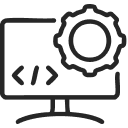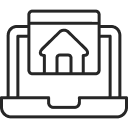7 Steps to Develop a Mobile App for On-Demand Delivery and Last-Mile Logistics
- April 9, 2024
-
2995 Views
- by Ishan Vyas
Table of Contents
- Emergence of On-demand Delivery and Last-mile Logistics
- 7 Steps for On-Demand Delivery App Development
- Considerations for Success of On-demand Delivery and Last-mile Logistics App
- Best Practices for Last-Mile Logistics App Development
- Emerging Trends in On-Demand Delivery and Last-Mile Logistics
- Final Thought

Convenient and smooth delivery of goods is something every client expects. This change in customer behaviour has fueled on-demand delivery and last-mile logistics operations.
Organizations should leverage technology and explicitly versatile applications to remain on the ball and meet these developing client assumptions. By developing an on-demand delivery app, you can not only streamline operations but also develop consumer loyalty.
Moreover, to gain the upper hand, you can even get started with Upper’s route optimization app today and unlock the full potential of your delivery business. Going ahead, we will check out the steps to develop an intuitive and reliable mobile app for the delivery sector.
Are you ready to conquer the delivery market? Let’s begin.
Emergence of On-demand Delivery and Last-mile Logistics
With convenience, speed, and personalization being customer’s primary concerns, the on-demand delivery market has recently sparked. Additionally, with the rise of eCommerce businesses, customers have also been receiving their orders at a faster speed.
This change in buyer behaviour has prompted a surge in demand for productive last-mile logistics solutions in building materials ecommerce. Last-mile delivery, which alludes to the last phase of the supply chain process, has become a basic part of guaranteeing a consistent and good client experience.
The challenges in the last-mile logistics space are various, including overseeing complex delivery routes, guaranteeing ideal deliveries, handling returns and reverse logistics, and keeping up with cost-productivity. In any case, these provide additional opportunities for organizations to separate themselves by offering predominant delivery services.
By embracing the rise of on-demand delivery and last-mile logistics, organizations can open new roads for development, client steadfastness, and operational excellence.
7 Steps for On-Demand Delivery App Development
To foster an effective on-demand delivery application, organizations should follow an organized methodology that thinks about different elements, from business targets and client needs to innovative prerequisites.
Here are the seven essential steps for developing a robust app:
Step 1: Define your app’s objectives and target audience
Before setting out on the development journey, it’s vital to lay out a reasonable vision for your application. Begin by illustrating your application’s objectives and expected use cases. Is it safe to say that you are planning to smooth out food delivery, work with eCommerce logistics, or give a stage to local organizations? Characterizing your targets will assist you with remaining on track and pursuing informed choices all through the development cycle.
Define your app’s objectives and target audience. Before setting out on the food delivery app development journey, it’s vital to lay out a reasonable vision for your application.
Then, recognize your target audience. Who are the likely clients of your application? Is it true or not that you are taking care of clients looking for comfort, delivery partners searching for income opportunities, or organizations looking for proficient logistics solutions? Conducting thorough market research is fundamental to comprehending client requirements and problem areas. This will direct the app’s features, design, and overall user experience.
Step 2: Plan the app’s features and functionality
Whenever you’ve characterized your goals and target audience, now is the right time to design the application’s features and functionality. Begin by recognizing the core features that will drive the application’s basic role. These may incorporate real-time order tracking, consistent order placement, route optimization, and efficient delivery management.
Also, consider integrating extra elements that can upgrade the client experience, like pop-up messages, rating frameworks, digital payments, and loyalty programs. Ensure that the user interface (UI) and client experience (UX) are crucial for client reception and upkeep, focusing on features that address your target audience’s pain points while providing a seamless, intuitive experience.
Step 3: Choose the right technology stack
The technology stack you pick will altogether influence the application’s performance, versatility, and overall success. Begin by settling on the mobile app development platform(s) you need to target. Will you foster a local application for iOS, Android, or both? Then again, you might consider cross-platform improvement frameworks like Flutter or React Native for cost-effectiveness and faster time-to-market.
Then, plan a vigorous backend framework that can deal with high traffic, information handling, and constant updates. This might incorporate servers, databases, and applications programming interfaces (APIs) for seamless integration with third-party services such as maps, payment gateways, and analytics tools.
Step 4: Design and develop the app
With your technology stack in place, now is the ideal time to rejuvenate your application. Begin by making wireframes and models to picture the application’s user flow and interactions. This step is pivotal for recognizing potential ease of use issues and making vital changes before advancement starts.
When the models are approved, focus on making a visually appealing and user-friendly UI/UX design. Team up with experienced architects to guarantee your application’s point of interaction is intuitive, reliable, and complies with platform explicit design guidelines.
During the advancement stage, embrace an agile methodology that promotes iterative development, persistent testing, and rapid integration of client criticism. This approach guarantees that your application stays in line with client needs and market patterns all through the advancement lifecycle.
Step 5: Integrate with delivery and logistics systems
For an on-demand delivery app to work seamlessly, it should integrate with existing delivery and operations frameworks. Lay out connections with third-party delivery platforms, and fleet management systems, or foster your own operations foundation. Constant data synchronization and updates are fundamental for precise order tracking, optimizing delivery routes, and ensuring efficient operations.
Consider consolidating automation and optimization tools, such as trade compliance software, to smooth out delivery processes, reduce costs, and work on by and large proficiency. Features like dynamic routing, load streamlining, and intelligent dispatch can improve your application’s competitiveness in the on-demand delivery market.
Step 6: Test, deploy, and maintain the app
Before launching your application, subject it to thorough testing to recognize and address any functional, execution, or security issues. Conduct broad client testing to gather significant criticism and make essential upgrades. When testing is finished, foster an essential deployment plan that considers factors, for example, app store submission, staged rollouts, and client onboarding.
Keep in mind that your work doesn’t end with the application’s launch. Continuous maintenance, updates, and upgrades are pivotal for guaranteeing your application stays pertinent and cutthroat. Routinely monitor client input, application store reviews, and market patterns to distinguish regions for enhancement. Execute a powerful update and delivery system to flawlessly deliver new elements and bug fixes to your clients.
Step 7: Promote and market the app
With your application prepared for launch, now is the ideal time to advance and market it. You can also use app store optimization (ASO) strategies to improve your visibility and attract potential clients.
Additionally, incorporate social media, email, influencer marketing, and collaborations into your marketing strategies. Last but not least, encourage clients to leave positive surveys and ratings, as these can help resolve the user’s issues and improve the functionality of the on-demand delivery app.
Thus, businesses can create an effective on-demand and last-mile logistics app, driving client delight and operational excellence.
Considerations for Success of On-demand Delivery and Last-mile Logistics App
Developing an on-demand delivery app involves several crucial considerations for ensuring its longevity and efficiency. Here are key aspects to keep in mind:
Scalability and performance: Scalability is essential to accommodate business growth and fulfill fluctuating needs. Carrying out a strong and versatile framework, using load-adjusting techniques, and upgrading asset distribution can guarantee your application conveys a smooth and responsive experience during peak hours.
2)Security and data privacy: Executing strong safety efforts, like encryption, secure verification, and consistency with industry norms like PCI-DSS, is fundamental. Furthermore, complying with data protection guidelines like GDPR and having a clear security strategy can build trust with clients and relieve chances related to data breaches.
3)Integration with third-party systems: To provide a consistent encounter, your on-demand delivery application might have to coordinate with different third-party systems, like payment gateways, mapping services, and logistics providers. Ensuring seamless integration and information trade through APIs or middleware solutions can smooth out processes and improve the general client experience.
4)Compliance with local regulations and laws: Your app must adhere to local laws and regulations governing data privacy and delivery operations within the area. This depends heavily on which jurisdiction you are working under, if your technical team and app developers in Ireland are from a particular geographical area, you must follow the laws of that area.
By addressing these considerations, organizations can create a reliable, secure, and versatile on-demand delivery application that meets client assumptions and regulatory requirements.
Best Practices for Last-Mile Logistics App Development
To ensure the success of your on-demand delivery application, it’s crucial to follow the industry’s best practices throughout the development process
1. Agile development methodologies
Embrace an agile approach when it comes to logistics app development, consider iterative cycles, consistent input, and quick variation to change necessities and market demands.
2. User-centric design principles
Focus on client experience by consolidating client-driven plan standards, like intuitive navigation, clear visuals, and consistent collaborations, to guarantee ideal ease of use and commitment.
3. Continuous testing and quality assurance
Another best practice is implementing robust testing methodologies to ensure superior app performance. It includes unit testing, integration testing, and user acceptance testing, to identify and resolve issues early in the development process.
4. Robust backend infrastructure and APIs
Put resources into a versatile and secure backend framework, including servers, data sets, and APIs, to deal with high volumes of information and traffic while guaranteeing smooth integration with third-party systems.
Thus, following the above best practices in your business can contribute to creating a top-notch on-demand and last-mile delivery app.
Emerging Trends in On-Demand Delivery and Last-Mile Logistics
The constant advancing technology plus consumer inclinations are mostly driving the last-mile logistics and on-demand delivery industries. Here’s how:
1)Autonomous delivery vehicles and drones: Autonomous delivery robots and drones can change how products are moved, offering quicker and more proficient delivery services. Organizations like Amazon, Uber, and FedEx are now trying and executing these advancements. As innovation advances and guidelines adjust, we can hope to see more autonomous delivery solutions in metropolitan and rural regions.
2)Predictive analytics and machine learning: Using predictive analytics and machine learning techniques can fundamentally improve the proficiency and exactness of on-demand delivery activities. By examining authentic information and constant data, for example, traffic designs, weather patterns, and client inclinations, predictive models can upgrade routing, further improve delivery time estimates, and better manage stocks and asset assignments. Additionally, competitive intelligence software can help businesses delivering products through the app gain insights into their competitors’ strategies, optimizing their operations and enhancing their positioning in the market.
3)Internet of Things (IoT) and connected devices: IoT-empowered sensors and GPS beacons can give real-time visibility into the entire supply chain, from warehousing to last-mile delivery. Connected devices can screen shipment conditions, like temperature and humidity, guaranteeing the quality and well-being of transitory products. Moreover, IoT gadgets can improve vehicle execution, fuel utilization, driver conduct, predictive maintenance, and fleet management.
4)Sustainability and eco-friendly delivery practices: Organizations are exploring different strategies to diminish their carbon footprint and promote sustainability in last-mile strategies. These incorporate taking on electric vehicles or elective fuel sources, optimizing delivery routes to minimize emissions, executing reverse logistics programs for recycling and reusing bundling materials, and empowering clients to unite orders or settle on pick-up locations.
Thus, by following these emerging trends, businesses can future-proof their delivery operations, develop client experiences, and drive long-term growth.
Final Thought
All things considered, fostering a portable application for on-demand delivery and last-mile logistics requires a fundamental technique and careful execution. From characterizing your goals to testing and sending off the application, each step assumes an essential part in guaranteeing progress in the cutthroat delivery market.
Make sure to focus on client experience, consolidate feedback from partners, and remain updated on arising patterns in innovation and logistics. Thus, with dedication and innovation, your app can transform last-mile delivery operations, enhance customer loyalty, and drive business growth





 SaaS Development
SaaS Development Web Application Development
Web Application Development Mobile Application Development
Mobile Application Development Custom Software Development
Custom Software Development Cloud Development
Cloud Development DevOps Development
DevOps Development MVP Development
MVP Development Digital Product Development
Digital Product Development Hire Chatbot Developers
Hire Chatbot Developers Hire Python Developers
Hire Python Developers Hire Django Developers
Hire Django Developers Hire ReactJS Developers
Hire ReactJS Developers Hire AngularJS Developers
Hire AngularJS Developers Hire VueJS Developers
Hire VueJS Developers Hire Full Stack Developers
Hire Full Stack Developers Hire Back End Developers
Hire Back End Developers Hire Front End Developers
Hire Front End Developers AI Healthcare Software Development & Consulting
AI Healthcare Software Development & Consulting Healthcare App Development
Healthcare App Development EHR Software Development
EHR Software Development Healthcare AI Chatbot Development
Healthcare AI Chatbot Development Telemedicine App Development Company
Telemedicine App Development Company Medical Billing Software Development
Medical Billing Software Development Fitness App Development
Fitness App Development RPM Software Development
RPM Software Development Medicine Delivery App Development
Medicine Delivery App Development Medical Device Software Development
Medical Device Software Development Patient Engagement Software Solutions
Patient Engagement Software Solutions Mental Health App Development
Mental Health App Development Healthcare IT Consulting
Healthcare IT Consulting Healthcare CRM Software Development
Healthcare CRM Software Development Healthcare IT Managed Services
Healthcare IT Managed Services Healthcare Software Testing services
Healthcare Software Testing services Medical Practice Management Software
Medical Practice Management Software Outsourcing Healthcare IT Services
Outsourcing Healthcare IT Services IoT Solutions for Healthcare
IoT Solutions for Healthcare Medical Image Analysis Software Development Services
Medical Image Analysis Software Development Services Lending Software Development Services
Lending Software Development Services Payment Gateway Software Development
Payment Gateway Software Development Accounting Software Development
Accounting Software Development AI-Driven Banking App Development
AI-Driven Banking App Development Insurance Software Development
Insurance Software Development Finance Software Development
Finance Software Development Loan Management Software Development
Loan Management Software Development Decentralized Finance Development Services
Decentralized Finance Development Services eWallet App Development
eWallet App Development Payment App Development
Payment App Development Money Transfer App Development
Money Transfer App Development Mortgage Software Development
Mortgage Software Development Insurance Fraud Detection Software Development
Insurance Fraud Detection Software Development Wealth Management Software Development
Wealth Management Software Development Cryptocurrency Exchange Platform Development
Cryptocurrency Exchange Platform Development Neobank App Development
Neobank App Development Stock Trading App Development
Stock Trading App Development AML software Development
AML software Development Web3 Wallet Development
Web3 Wallet Development Robo-Advisor App Development
Robo-Advisor App Development Supply Chain Management Software Development
Supply Chain Management Software Development Fleet Management Software Development
Fleet Management Software Development Warehouse Management Software Development
Warehouse Management Software Development LMS Development
LMS Development Education App Development
Education App Development Inventory Management Software Development
Inventory Management Software Development Property Management Software Development
Property Management Software Development Real Estate CRM Software Development
Real Estate CRM Software Development Real Estate Document Management Software
Real Estate Document Management Software Construction App Development
Construction App Development Construction ERP Software Development
Construction ERP Software Development








